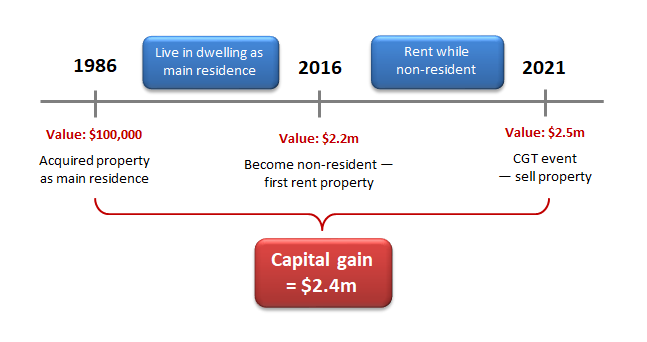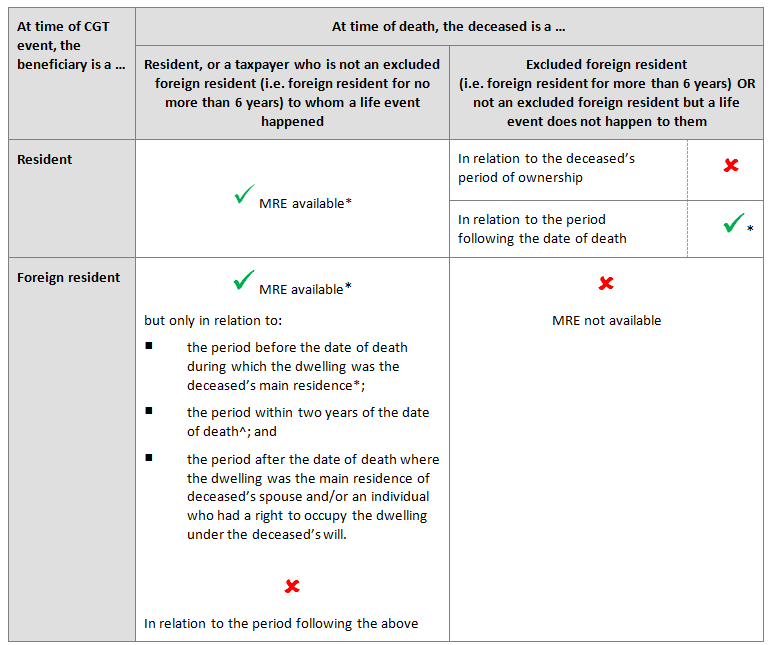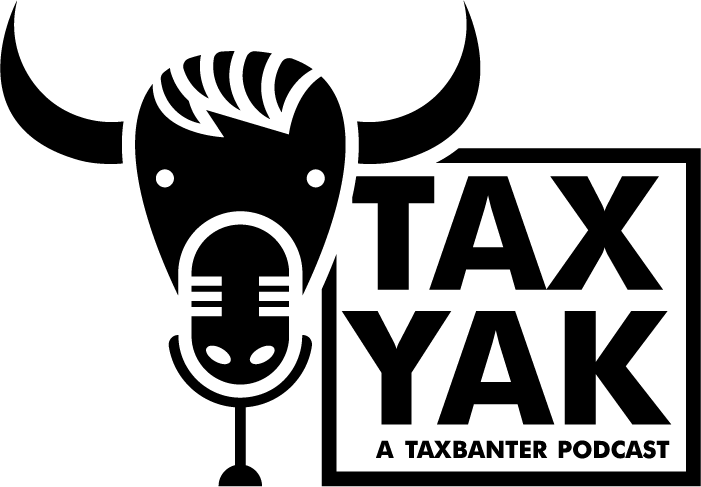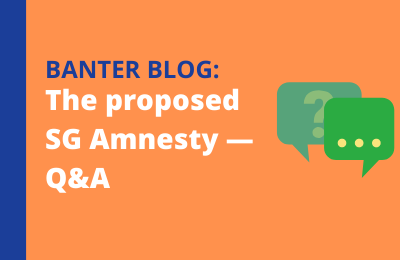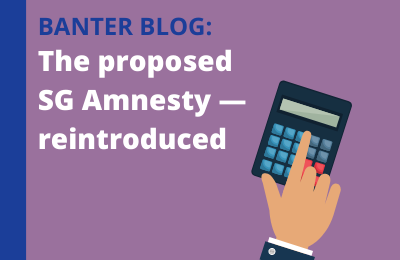On 13 January 2020, the Commissioner registered a Legislative Instrument CRP 2020/1 titled Taxation Administration (Remedial Power — Disclosure of Protected Information by Taxation Officers) Determination 2020 (the Legislative Instrument). An accompanying Explanatory Statement was previously released with the draft of the Legislative Instrument. As explained below, the earliest this instrument can take effect is 13 May 2020.
The effect of the instrument is to consider representatives of an executor or administrator of a deceased estate a ‘covered entity’ to ensure that an ATO officer does not commit an offence when protected information of the deceased is disclosed to the following:
- a registered tax agent or BAS agent of an executor or administrator of the deceased’s estate; or
- a legal practitioner representing an executor or administrator of the deceased’s estate in relation to the deceased’s affairs relating to one or more taxation laws.
![]() Note:
Note:
In this article, a registered tax agent, registered BAS agent and legal practitioner are collectively referred to as ‘representatives’ of the executor or administrator of the deceased estate.
The tax obligations of an executor or administrator
Executor vs administrator
An ‘executor’ of a deceased estate can be appointed only under a Will. If the individual died intestate (i.e. without a valid Will), the next of kin (generally the spouse, a child or another close family member of the deceased) may be appointed by the Court as the ‘administrator’ of the estate.
The tax law (see s. 995-1 of the ITAA 1997) refers to ‘an executor or administrator of an estate of an individual who has died’ as a ‘legal personal representative’ (LPR).
The LPR must administer and finalise the estate in accordance with the terms of the Will or under the laws of intestacy (as appropriate). The estate is finalised when all debts — including taxation liabilities — have been settled and all assets sold or distributed.
Tax issues arising up to the date of death
For tax issues of the deceased individual arising up to the date of death, the LPR must (as relevant):
- notify the ATO of the death, including providing the death certificate and proof that the LPR has authority to deal with the tax affairs of the deceased person;
- lodge any outstanding prior year income tax returns or prior period business activity statements (BASs) of the deceased person;
- lodge a final (date of death) income tax return, or a non-lodgment advice, on behalf of the deceased person as necessary;
- lodge a final BAS for the concluding tax period (which ends the day before the death) and cancel the deceased’s GST registration (assuming they were registered for GST).
For an executor or administrator of a deceased estate, managing the affairs of the deceased includes a range of final tax obligations which can be complex. The Commissioner recognises that it is desirable that executors and administrators be able to obtain assistance from representatives in finalising the tax affairs of the deceased where necessary.
Tax issues arising after the date of death
For tax issues that arise for the deceased estate after the death of the individual, the LPR must:
- apply for a TFN for the deceased estate if estate tax returns need to be lodged;
- apply for an ABN for the deceased estate if the enterprise that the deceased carried on will continue to be carried on by the LPR;
- prepare and lodge trust tax returns for the deceased estate if necessary;
- pay tax on behalf of beneficiaries who are not presently entitled to the income of the estate (as the trustee is subject to tax on the estate’s taxable income if no beneficiary is presently entitled to a share of the income of the estate);
- pay tax on behalf of certain beneficiaries who are presently entitled to the income of the estate — such as minors, legally incapacitated or non-residents;
- prepare and lodge BASs for the deceased estate if necessary.
Why is there a problem with the ATO disclosing the information?
Disclosure of protected information
Section 355-25 of Schedule 1 to the TAA provides that, unless an exception applies, it is an offence, punishable by two years’ imprisonment, for an ATO officer to disclose ‘protected information’ to entities other than the entity to whom the information relates, or a ‘covered entity’.
What is protected information?
‘Protected information’ — under s. 355-30 of Schedule 1 to the TAA — means information that:
- was disclosed or obtained under or for the purposes of a taxation law (other than the Tax Agent Services Act 2009);
- relates to the affairs of an entity; and
- identifies, or is reasonably capable of being used to identify, the entity.
For example, protected information might include:
- interest and dividend income derived from investments that were held by the deceased individual;
- salaries and wages and associated PAYG withholding amounts related to employment services rendered by the deceased person; or
- PAYG instalment amounts paid by the deceased person before they died.
All of this information is necessary for the registered tax agent to complete the deceased individual’s final tax return and the estate’s tax returns.
![]() Note:
Note:
Tax file numbers do not constitute protected information because they are not, by themselves, reasonably capable of being used to identify an entity.
Who is a covered entity?
Broadly, an entity is covered by s. 355-25(2) in relation to protected information that relates to another entity (the ‘primary entity’) where the covered entity is:
- the primary entity’s registered tax agent or BAS agent;
- a legal practitioner representing the primary entity in relation to taxation laws;
- a public officer of the primary entity;
- a representative of the primary entity where the primary entity is an incapacitate entity;
- the legal personal representative of the primary entity;
- the guardian of the primary entity where the primary entity is a minor or suffers from mental incapacity;
- a member of the same consolidated group or multiple entry consolidated group as the primary entity; or
- a representative of the primary entity who has been nominated by the primary entity to act on that entity’s behalf with respect to protected information.
![]() Note:
Note:
The ATO has stated that in limited circumstances it may need to speak directly to a person who is not the executor or administrator — but this does not extend to providing broader information that would assist in the administration of the estate. Further, the ATO will not record the person or any nominated representatives as an authorised contact for the deceased estate.
Exceptions
An exception from the general prohibition on disclosing protected information to persons other than covered entities may be available under s. 355-50, if an ATO officer can make an assessment that a specific disclosure is to be made in the performance of their duties as an ATO officer.
The circumstances in which this exception is available are limited, and include (but are not limited to) where the disclosure is made:
- to any entity, court or tribunal for the purposes of legal proceedings;
- to any entity for the purpose of enabling the entity to understand or comply with taxation laws;
- a board that is performing a function or exercising a power under a taxation law;
- to Government Ministers.
Further, eligibility for exception must be assessed on a case by case basis.
Post-date of death information
Where the executor or administrator manages income after the person’s death (e.g. where they continue to run a business for the deceased estate) and applies for a trust tax file number, they can appoint a legal practitioner or tax agent as an authorised contact.
The authorised contact can access information of the deceased estate trust only, being information obtained by the ATO after the individual’s death.
Pre-date of death information
Relevant to this article, under s. 355-25(2) an ATO officer can provide protected information of a deceased person to an executor or administrator of an estate of an individual who has died.
However, such information cannot be provided to a representative appointed by an executor or administrator of the deceased person’s estate, except in limited circumstances.
As a result, an executor or administrator of a deceased estate is in a more disadvantageous position compared to other entities that are able to appoint representatives to assist them in understanding and complying with their tax obligations.
But we used to be able to access this information … what’s changed?
As discussed above, ATO officers are bound by strict taxpayer confidentiality laws. Currently, the operation of these laws means that while the executor or administrator can access the tax information of the deceased person from the ATO, the representatives of the executor or administrator cannot do the same.
That said, agents were previously able to access the tax information of the deceased person from the ATO via the former Tax Agent Portal or the BAS Agent Portal — this should never have been allowed to occur. So when the ATO migrated agents onto the new Online services for agents, representatives can no longer access this necessary information unless they are themselves the LPR.
The ATO has recognised that, often, it will be more efficient if the representatives are able to obtain the necessary information directly from the ATO, including electronically through Online services.
Exercising the Commissioner’s remedial power
The Legislative Instrument sets out the Commissioner’s exercise of his remedial power to modify the operation of s. 355-25(2) of Schedule 1 to the TAA.
Section 370-5 of Schedule 1 to the TAA gives the Commissioner a remedial power to determine, by Legislative Instrument, a modification of the operation of a provision of a taxation law if:
- the modification is not inconsistent with the intended purpose or object of the provision;
- the Commissioner considers the modification to be reasonable, having regard to various matters (i.e. the intended purpose or object of the provision, and whether the cost of complying with the provision is disproportionate to that intended purpose or object);
- any impact of the modification on the Commonwealth budget would be negligible.
Section 17(1) of the Legislation Act 2003 requires that the rule-maker is satisfied that appropriate and reasonably practicable consultation has been undertaken.
The Legislative Instrument
The Legislative Instrument recognises that an executor or administrator of a deceased estate effectively ‘stands in the shoes’ of the deceased individual — i.e. they assume the rights, burdens and obligations of the deceased person.
By allowing ATO officers to disclose the deceased person’s protected information to a representative, the executor or administrator can be represented in performing their duties in the same way that the deceased person could have if they were alive.
The Legislative Instrument notionally amends s. 355-25(2). There will be no textual amendment to the legislation, but rather, the instrument modifies and clarifies the operation of the provision, so that representatives of an executor or administrator of a deceased estate will be considered a covered entity.
Specifically, s. 355-25(2) has been notionally amended to include a provision stipulating that where the primary entity is an individual who has died, the following are covered entities:
- a registered tax agent of an executor or administrator of the primary entity’s estate;
- a registered BAS agent of an executor or administrator of the primary entity’s estate;
- a legal practitioner representing an executor or administrator of the primary entity’s estate in relation to the primary entity’s affairs relating to one or more taxation laws.
![]() Note:
Note:
The provision of a deceased person’s information directly to a registered tax agent, BAS agent or legal practitioner will only be lawful if a grant of probate or letters of administration has been obtained. This is in accordance with the ATO’s existing policy whereby it will disclose protected information to anyone until probate or letters of administration have been granted to confirm that they are legally recognised to administer the estate.
The modification is not inconsistent with the intended purpose or object of the provision
The Commissioner considers the modification is not inconsistent with the intended purpose or object of the provision.
The policy intent of Subdiv 355-B — and in particular, s. 355-25(2) — indicates that the covered entity exceptions have been drafted as a practical pathway for ATO officers to determine whether an agency relationship exists, while still recognising the need for taxpayers to be able to be represented in their dealings with the Commissioner. It was also considered important to permit disclosures to legal practitioners who might not be considered an agent under the common law, but who otherwise might have a legitimate need to access a taxpayer’s information in their capacity as a representative of a taxpayer.
The Commissioner considers that had these particular circumstances of a representative of the executor or administrator of a deceased estate been considered at the time the law was drafted, the law would have been drafted differently. It would have provided for this circumstance while still upholding the key principle of the protection of taxpayer information.
Modification is reasonable
The Commissioner recognises that managing the affairs of the deceased can be complex, that the passing of a deceased person can be a stressful and emotional time, and that executors and administrators often need to be able to obtain assistance from their representatives in finalising those affairs.
The Commissioner considers the modification to be a reasonable measure to ensure that the taxpayer confidentiality provisions avoid creating unintended outcomes for executors or administrators of a deceased estate.
The modification will significantly reduce the administrative burden for an executor or administrator of a deceased estate in finalising the tax affairs of the deceased. It will enable them to be represented by a registered tax agent, BAS agent or legal practitioner in their dealings with the Commissioner, placing them in a similar position to other taxpayers.
Application date
The modification of s. 355-25(2) applies in relation to a disclosure of information that occurs on or after the commencement of the Legislative Instrument.
The Legislative Instrument cannot commence until before the first day that it is no longer liable to be disallowed under s. 42 of the Legislation Act 2003 which in turn provides that a House of the Parliament has 15 days to disallow a Legislative Instrument. Based on the limited Parliamentary sitting days scheduled for 2020, this means that the Legislative Instrument cannot take effect before 13 May 2020.
![]() Implications
Implications
Until the Legislative Instrument takes effect, registered agents of an executor or administrator of a deceased estate will have to continue to rely on the executor or administrator to provide protected information.
ATO administrative changes
The ATO removes access to a client when it receives official notification of their death.
Since December 2019, agents who use Online services for agents and who are also the executor or administrator of an estate can add the deceased person as a client.
Once the Legislative Instrument takes effect, agents will be able to add a deceased person as a client and access their records. Legal practitioners will also be able to be added as authorised contacts on the deceased person’s records.
![]() Query
Query
While it is pleasing to see a favourable ATO response to this issue, there has been no mention of any lodgment extension for affected date of death returns or of the ATO’s position on remitting GIC and penalties for late lodgments arising from this issue. It would be disingenuous for the ATO to impose interest and penalties for failing to lodge a date of death return on time when it is not legally allowed to provide the information necessary to prepare and lodge the return.
In the interim, the ATO has developed a Deceased estate data package. This provides an extract of information of the deceased, which will be provided directly to the executor or administrator. They may then pass the information on to the tax agent or legal practitioner to assist in administering the deceased estate.
Deceased estate data package
The Deceased estate data package will contain the following information (where it exists):
- individual tax return information for the last three income years;
- an extract of income and investment data for the last three income years;
- an extract of notices of assessment issued for the last three income years;
- copy of the most recent statement of account;
- any outstanding ATO debts;
- any superannuation accounts identified;
- payroll data received for the current year.
The executor or administrator can request a package by:
- phoning 13 28 61
- writing to:
Australian Taxation Office
GPO Box 9990
[insert the name and postcode of your capital city]
A tax agent or legal practitioner representing the executor or administrator can also request that the package be sent to the executor or administrator. However, under current law, the package cannot be sent directly to the tax agent or legal practitioner.
Registered tax agents can request a package via Online services for agents.
